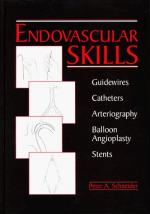|
This section contains 474 words (approx. 2 pages at 300 words per page) |

|
Balloon angioplasty is an invasive surgical procedure to relieve a condition called atherosclerosis in which the arteries become clogged by deposits of fatty material called plaque, severely restricting blood circulation to the heart, brain, or extremities. In severe cases, the end result is heart attack, stroke, or the amputation of a limb due to gangrene. By inserting a balloon-tipped catheter into a blocked artery and inflating the balloon, plaque is compressed against the inner vessel walls allowing blood to pass freely.
In 1929, German physician Werner Forssmann (1904-1979) devised a way to thread a catheter--a long, thin, flexible tube--through a vein from an arm into the heart. In 1958, Mason Sones invented a way to visualize individual coronary arteries, a technique called selective coronary arteriography. In 1964 Charles T. Dotter and Melvin Judkins of the University of Oregon combined these advances to successfully perform transluminal (along the lumen, or...
|
This section contains 474 words (approx. 2 pages at 300 words per page) |

|


